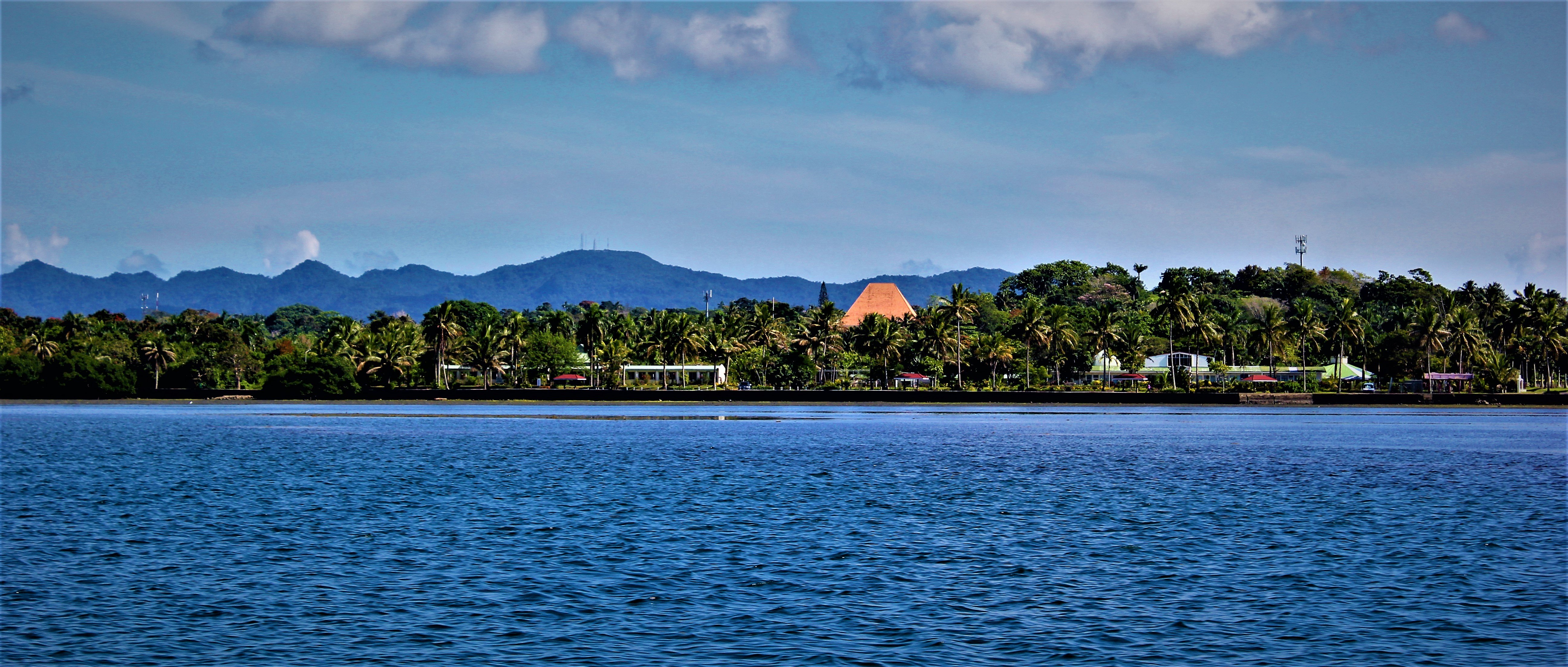Introduction[i]
Plastic pollution is an insidious and wicked environmental problem that must be tackled at an international and national level with the involvement of governments, the commercial sector and consumers. A solution will require a progressive shift from the current linear (extract – produce – consume – discard) to a circular economy model.
Small Island Developing States (SIDS) are also large ocean States - particularly vulnerable to, and adversely impacted by, plastic pollution. With the AOSIS Ocean Day Plastic Pollution Declaration and the Pacific Regional Declaration on the Prevention of Marine Litter and Plastic Pollution and its Impacts SIDS have raised their collective voice calling for urgent action and support for a global, coherent and comprehensive legal regime to be put in place to address this rapidly growing global and transboundary environmental crisis, and they have been heard.
The UN Environment Assembly (UNEA), voted unanimously in favour of Resolution 5/14 at the second meeting of the UNEA’s fifth session (UNEA 5.2) held in Nairobi on 28th February to 2nd March 2022, giving the green light to start to negotiate an internationally binding Treaty to end plastic pollution.
This article outlines the planned negotiating process and the key provisions and factors that need to be considered as the Treaty is negotiated for all States to tackle plastic pollution at an international and national level and what needs to be done to create this Treaty is set out in the Resolution.
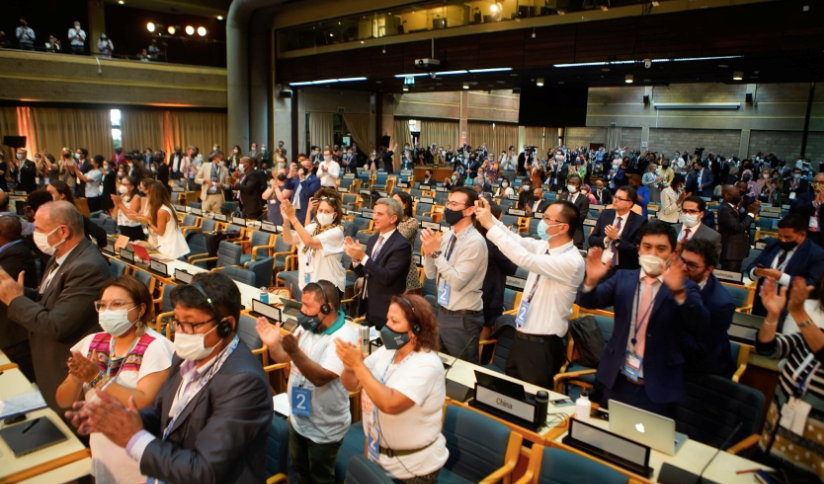
Plastic is a convenient strong, lightweight, malleable, and cheap material that has become ubiquitous in our daily lives, in many instances having replaced traditional glass and natural materials. Plastic is also durable, so is plastic litter (the lifespan of a plastic bottle or a disposable nappy is of 450 years or more). This means that all the plastic that has ever been produced still lingers in the environment, in landfills or the ocean. Plastic is also a toxic pollutant that is now found in the most remote places of the planet, in the guts of fishes and seabirds, and worryingly in the human body (it has been found in human blood and placenta).
The UNEA Resolution to ‘End Plastic Pollution: Towards an internationally and legally binding Treaty'
In a historic moment, on 2 March 2022, at the fifth session of the UN Environment Assembly (UNEA 5.2), the representatives of the United Nations’ Member States unanimously adopted the Resolution to ‘End plastic pollution: towards an international legally binding instrument’ (UNEP/EA.5/Res.14) (‘the Resolution’). UNEP Executive Director, Inger Andersen, commented that a global plastics treaty holds the potential and the promise of being the biggest multilateral environmental breakthrough since the Paris climate accords signed in 2015.
The Resolution requests the Executive Director of UNEP to convene an intergovernmental negotiating committee (INC) mandated to: develop an international legally binding instrument (“Treaty”) on plastic pollution, including the marine environment and micro plastics; guides the negotiators by defining the timeline, the approach and considerations; and to determine the key elements of the Treaty.
Resolution 5/14 also requests UNEP to convene an Ad Hoc Open Ended Working Group (OEWG) to prepare for the work of the INC. The OEWG meeting was scheduled on 30 May –1 June, in Dakar, Senegal. For this meeting, UNEP’s Secretariat suggested that OEWG:
(a) Consider the proposed timetable of sessions of the intergovernmental negotiating committee;
(b) Consider how to cluster and organize the work of the INC;
(c) Request the secretariat, drawing on previous multilateral agreements, to prepare draft elements of and options for the structure of the international legally binding instrument on plastic pollution for consideration by the intergovernmental negotiating committee at its first session;
(d) To provide guidance to the secretariat and recommendations to the INC on the initiation of a multi-stakeholder action agenda to engage with stakeholders in informing the negotiation process towards the Treaty.
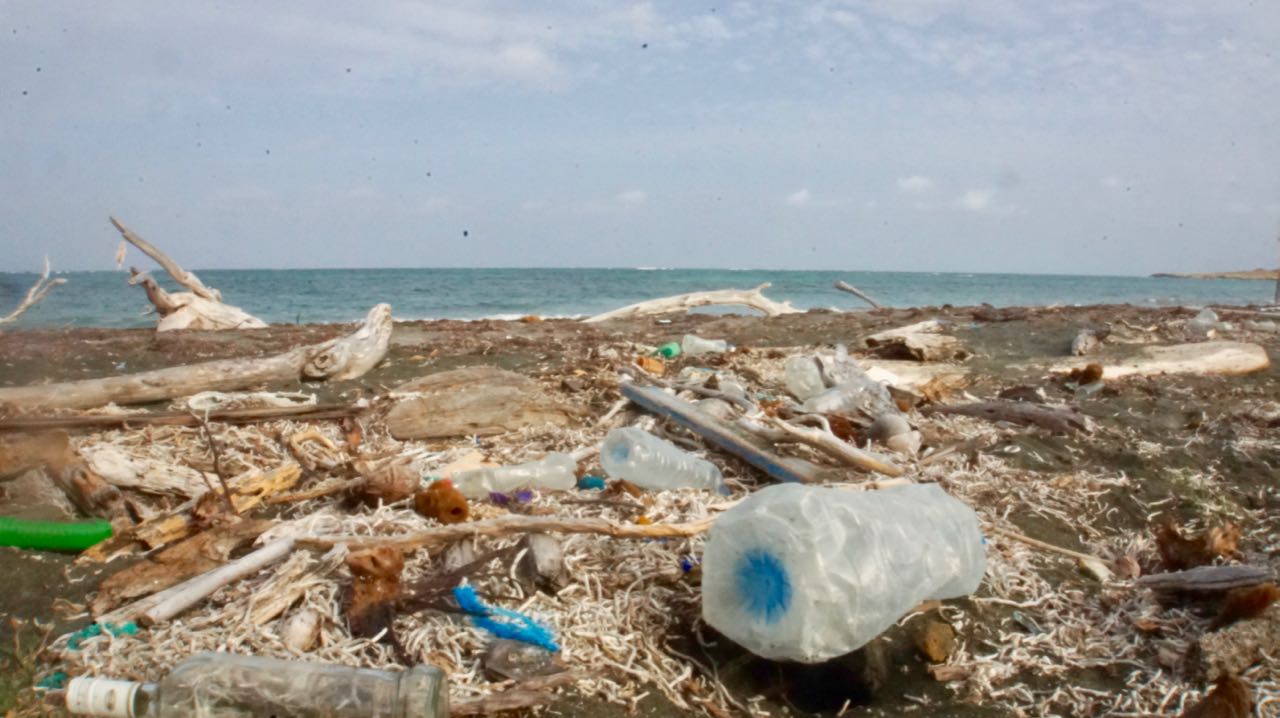
The Treaty negotiation timeline
The Resolution states that INC is to begin work during the second half of 2022, with the ambition of completing its work by the end of 2024. It does not specify the details of the INC sessions. The two options proposed by UNEP’s Secretariat for consideration by the OEWG, are based on UNEP’s experience of treaty negotiations and aim to balance the need for sufficient time for member states’ negotiations with the time needed for undertaking intersessional work to provide the required information.
The first option is to organize five negotiating sessions. This option allows for more time for negotiations among member states (approx. 93 hours).
The second option is to organise four negotiating sessions, allowing for more time for intersessional work between intergovernmental negotiating committee meetings, but less negotiating time (approx. 69 hours).
In accordance with the resolution’s Operative Paragraph 16 (OP16), a forum that is open for all stakeholders for the exchange of information and activities related to plastic pollution is to be convened in conjunction with the first meeting of the INC. UNEP proposes to hold this stakeholders’ forum a day prior to the meeting, for a summary of its outcomes to be reported to the first meeting of the INC. The inclusion of stakeholders in the negotiation process echoes the preambulatory paragraphs of the Resolution that acknowledges the efforts of all government, intergovernmental organisations, non-government organisations and the private sector in preventing plastic pollution and its risks. It also relates the reaffirmation of the importance of collaboration, coordination and complementarity including stakeholders and among regional and international conventions and instruments.
In both options, the first negotiating session would be held in second half of November 2022, and the last in November 2024. A Diplomatic Conference of Plenipotentiaries would then be convened to adopt the text formally in 2025.
OP3 and OP4 of the Resolution provide guidelines for the work of the INC, including the key provisions to be included in the new instrument, and the principles and factors that should be given consideration to during the deliberations. Excerpts of the Resolution highlighting the Resolution’s key guiding elements for the deliberations of the INC are quoted below, followed by a short commentary. They relate to:
- The scope of the instrument and approach to be adopted
- The key provisions to be included in the instrument
- Some key considerations to be given by the INC
Scope of the Instrument/Treaty and the approach to be adopted
“(An) instrument on plastic pollution, including in the marine environment (…) based on a comprehensive approach that addresses the full life cycle of plastic” (OP3)
A comprehensive approach to plastic pollution is to be adopted to design an effective response to the plastic crisis that the current fragmented plastic governance regime - focusing on plastic waste and marine plastic litter, at the end of the life cycle of plastics - has proved unable to curb. This approach answers the call of many regions and countries, including in the Pacific Islands region, to ‘stop the plastic tap’ and address the problem of plastic pollution at the source rather than solely attempt to manage its increasingly unmanageable impacts.
“an international legally binding instrument on plastic pollution (…) which could include both binding and voluntary approaches” (OP3)
The instrument is to be a legally binding instrument, but the Resolution gives room for some flexibility with the inclusion, in addition to the obligating provisions, of soft law / voluntary commitments by member states. This approach accommodates the diversity of views that had emerged during the meetings of the Ad Hoc Open Ended Working Group on marine litter and microplastics (AHEG). It is also a recognition that voluntary approaches and voluntary tools such as industry standards have a role to play and can be effective in contributing to the objective of the instrument to end plastic pollution.
“taking into account among other things, the principles of the Rio Declaration on Environment and Development, as well as national circumstances and capabilities” (OP3)
The principles of the 1992 Rio Declaration constitute an essential foundation of international environmental law, and have been integrated in many MEAs. They include among others the Precautionary Principle (Principle 15), and the Polluter Pays Principle (Principle 16) – which gives a legal basis to the extended producer responsibility- , as well as the duty to prevent transboundary harm (Principle 2 of the Rio Declaration and Principle 21 of the Stockholm Declaration 1972).
Principle 7 of the Rio Declaration, the Principle of Cooperation, and Common but Differentiated Responsibilities and Respective Capabilities, and stresses the responsibility borne by developed countries “in view of the pressures their societies place on the global environment”. Principle 7 is reflected in the resolution, including in OP2 “acknowledging that some legal obligations arising out of a new international legally binding instrument will require capacity-building and technical and financial assistance in order to be effectively implemented by developing countries and countries with economies in transition”.
Key provision to be included in the Instrument
OP 3 also identifies some 16 provisions that are to be negotiated and included in the Treaty.
“To specify the objectives of the instrument” OP3(a)
The definition of the objectives of a Multilateral Environmental Agreement (MEA) is a significant as it will guide all provisions of the instrument and possible additional protocols, as well as the strategies, policies and legal instruments developed at regional and national levels to support the achievement of the stated objectives.
“To promote sustainable production and consumption of plastics through, among other things, product design and environmentally sound waste management, including through resource efficiency and a circular economy approaches.” OP3 (b)
This provision aligns with Sustainable Development Goal 12: Responsible consumption and production, especially Target 12.4: “environmentally sound management of chemicals and all wastes throughout their life cycle” and Target 12.5: “substantially reduce waste generation through prevention, reduction, recycling, and reuse”. It reflects the necessity to prioritise prevention of plastic waste, including through a shift to a circular economy model, which could reduce the volume of plastics entering oceans by over 80 per cent by 2040; reduce virgin plastic production by 55 per cent; save governments US$70 billion by 2040; reduce greenhouse gas emissions by 25 per cent; and create 700,000 additional jobs – mainly in the global south[1].
“To promote national and international cooperative measures to reduce plastic pollution in the marine environment, including existing plastic pollution” (OP3(c))
No country and no industry alone can stop marine plastic pollution. Its transboundary nature and the multiple sources dictate a multi-sectoral and multilateral cooperative approach, which a global instrument can facilitate.
“To develop, implement and update national action plans reflecting country-driven approaches to contribute to the objectives of the instrument” (OP3(d));
“To promote national action plans to work towards the prevention, reduction and elimination of plastic pollution and to support regional and international cooperation (OP3(e)); and
“To specify national reporting, as appropriate” (OP3(f))
The operative subparagraphs OP3(d) to OP(f) address what will constitute the core of the operative provisions and obligations of the Parties to the instrument. The requirement for member states to develop and periodically report on and update their national strategy and /or action plan to meet their international commitments is an effective tool for the implementation of the commitments made by member states when ratifying a treaty. It also holds countries accountable for their national action and allows the countries to adjust their commitments according to their respective capabilities, and serves as an indicator the instrument’s effectiveness. Action plans requirements are commonly found in MEAs. For example, the Convention on Biological Diversity requires Parties to develop a National Biodiversity Strategy and Action Plan (NBSAP), and the Paris Agreement under the Framework Convention on Climate’s Paris Agreement requires that Parties develop their Nationally Determined Contributions (NDCs).
“To periodically assess the progress of implementation of the instrument” (OP3(g))
“To periodically assess the effectiveness of the instrument in achieving its objectives” (OP3(h))
The assessment of the progress of implementation of the instrument and its effectiveness will be supported by the obligations of the parties set in OP3 subparagraphs (d) to (f) above.
“To provide scientific and socio-economic assessments related to plastic pollution”; (OP3(i)) and
“To increase knowledge through awareness-raising, education and information exchange” (OP3(j)) and
“To specify arrangements for capacity-building and technical assistance, technology transfer on mutually agreed terms, and financial assistance, recognizing that the effective implementation of some legal obligations under the instrument will depend on the availability of capacity-building and adequate financial and technical assistance” (OP3 (n))
“To promote research into and development of sustainable, affordable, innovative and cost-efficient approaches” (OP3 (o))
These subparagraphs highlight the importance of developing knowledge of the issue of plastic pollution and its impacts, and increasing capacity and awareness for its management, and the need for financial and technical assistance, technology transfer to developing countries on mutually agreed terms.
“To promote cooperation and coordination with relevant regional and international conventions, instruments and organizations, while recognizing their respective mandates, avoiding duplication and promoting complementarity of action” (OP3(k));
“To encourage action by all stakeholders, including the private sector, and to promote cooperation at the global, regional, national and local levels” (OP3(l)); and
“To initiate a multi-stakeholder action agenda” (OP3(m)
Preambulatory Paragraph 11 of the resolution acknowledges the efforts made through national, regional and international action plans, initiatives and instruments, including relevant multilateral agreement, in reducing plastic pollution and /or its impacts. Establishing a global and comprehensive governance regime to remedy the ineffectiveness of the current fragmented regime is a key purpose for new global plastic instrument and can only be achieved through cooperation and coordination among relevant instruments and actors at all levels.
“To address compliance” (OP3 (p))
The Resolution does not give any specific direction on to how to address compliance, but the INC may look into other MEAs for provisions on how to support compliance, such as monitoring and reporting obligations, compliance assistance, non-compliance response mechanism, and dispute resolution mechanism.
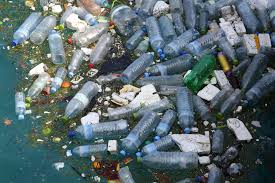
Matters to be considered by the INC during the deliberations
OP4 of the Resolution directs the INC to give consideration to the following matters during its deliberations.
A series of considerations relate to the implementation of the instrument. They include:
“Obligations, measures and voluntary approaches in supporting the achievement of the objectives of the instrument” (OP4(a))
The determination of which provisions of the instrument will be legally binding obligations on the member states, and what will be included in the instruments as a voluntary commitment may prove a difficult part of the negotiations.
“The need for a financial mechanism to support the implementation of the instrument, including the option of a dedicated multilateral fund” (OP4(b))
Substantial financial resources will be required for the implementation of the obligations under the treaty including for monitoring and reporting, and for the corresponding governance frameworks, capacity and technologies enabling the transition to a circular plastic economy model, extended producer responsibility, recycling facilities, as well as the monitoring and reporting. So will the financial assistance to support for institutional strengthening capacity building and technology transfer to developing countries, including small islands developing states. The option for a dedicated multilateral fund appears to be a favored option.
“Flexibility that some provisions could allow countries discretion in the implementation of their commitments, taking into account their national circumstances” (OP4(c))
This may include flexibility in the implementation of obligation for developing countries and countries in economic transition, according to the principle of common but differentiated responsibilities and respective capabilities. It may also refer to the financial commitments that developed countries may afford in contributing to a multilateral fund or other financial mechanism established under the instrument.
Further, consideration should be given to ensure knowledge-based measures, including science, traditional knowledge, best practice, and including socio-economic information. They include:
“The best available science, traditional knowledge, knowledge of indigenous peoples and local knowledge systems” (OP4(d))
The acknowledgment of the role of traditional, indigenous and local knowledge systems are to play, along with the best available science, as part of the solution to the plastic crisis, will have to be accompanied by suitable mechanisms to ensure their meaningful contribution.
“Lessons learned and best practices, including those from informal and cooperative settings” (OP4(e))
The resolution does not specify how this may be achieved, but consideration may be given to a virtual platform for collating and sharing best practices such as a clearinghouse or other portal.
“The possibility of a mechanism to provide policy-relevant scientific and socioeconomic information and assessment related to plastic pollution” (OP4(f))
This mechanism will be needed to fulfil the requirement for the instrument “to provide scientific and socio-economic assessments related to plastic pollution” (OP3 (i)). Such information and assessment mechanism would rely on the reporting monitoring system put in place, and should ensure transparency and inform policy at all levels. This information could be collated and centralised in a portal as mentioned above.
Concluding remarks
The time for negotiating the Treaty, just over 2 years, is ambitious by international instruments negotiations standards. However, all the preparatory work that has been done in the lead to UNEA 5 by the Ad Hoc Working Group on marine litter and microplastics (AHEG), UNEP, bilateral and multilateral donors, academia and NGOs has given to the negotiators a solid head start in framing its approach and content, which could permit the instrument to be open for signatures in 2025. More information on the INC process and additional resources may be found on UNEP website here.
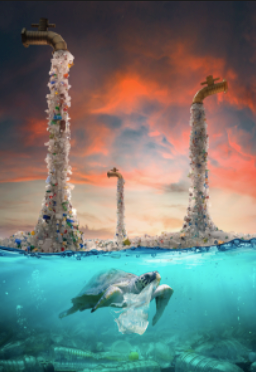
About the author:
Patricia A. Parkinson, LLB, MEL, Director & Principal Consultant, Environmental Law Oceania Consultancy PTE LTD, is an environmental law and international law specialist with twenty years’ experience working in S.E Asia and the Pacific on technical assistance and capacity building development assistance projects. She moved to Fiji ten years ago to take the position of Senior Environmental Legal Officer with IUCN Oceania, and then was Legal Advisor for Fiji Environmental Law Association (FELA) before founding ELO Consultancy. Recently, her work has mostly focused on promoting and strengthening the international and national policy and legal frameworks for the prevention of plastic pollution in the Pacific Islands. Patricia is an active member of IUCN WCEL and CEESP, as well as of the Pacific Islands Roundtable for Nature Conservation and Protected Areas (PIRT)’ Environmental Law Working Group and of the newly established Nature Culture Working Group.
Contact: elocfiji@gmail.com
[1] IRP (2021) Policy Options to Eliminate Additional Marine Plastic Litter, Report of the International Resource Panel. United Nations Environment Programme
[i] This article follows the article ‘Towards a global agreement on plastics and plastic pollution for the Pacific Islands’ published in SAS’ Ocean Law Bulletin in November 2020, which described the scope of the rapidly increasing level of plastic pollution, the growing international momentum in favour of a global agreement and the UNEA process to address effectively this crisis that affects the health of the ocean ecosystems, terrestrial and fresh water ecosystems, human health and human rights and generally threatens the achievement of all environmental, economic and social dimensions of the sustainable development goals.


